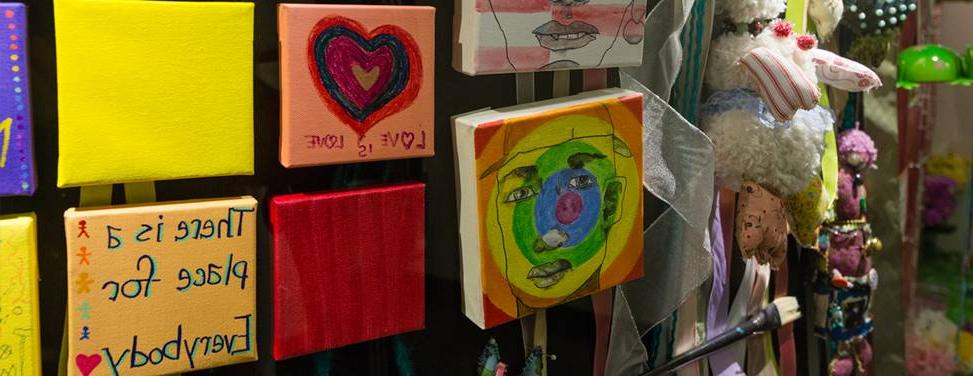Breast Cancer

Overview
什么是乳腺癌?
Breast cancer is the second most common cancer among women, with more than 200,000 new cases diagnosed each year nationwide. While known primarily as a women’s disease, men can also get breast cancer.
Breast cancer begins with abnormal cells developing in breast tissue. The cancer may be confined to the breast or spread to other parts of the body. The most common type begins in the ducts that carry milk to the nipple. But cancer also may occur in the small sacs that produce milk, called lobules, 或者在其他乳房组织中. 因为乳腺癌差异很大, treatment depends on the type and stage as well as the individual patient's needs.
我们治疗乳腺癌的方法Breast cancer survival rates today are higher than ever due to advances in diagnosis and treatment. At the UCSF卡罗尔·弗兰克·巴克乳房护理中心, we specialize in screening to enable early detection, providing more effective and less toxic therapies, educating patients and pursuing cutting-edge research. We are committed to discovering new and better ways to prevent and treat breast cancer.
UCSF offers the highest quality breast cancer care in a respectful and supportive environment. 为每一位病人服务, our surgeons, oncologists, radiologists, psychologists and nutritionists work as a team to heal the whole person, 无论是身体上还是情感上.
Awards & recognition
-

是全国顶尖的十大赌博平台排行榜之一
-

北加州最好的,排名第一. 全国癌症治疗排名第七
-

指定综合癌症中心
乳腺癌的类型
Breast cancer may be found in several forms, depending on where the cancer started and how far it has progressed.
原位乳腺癌,DCIS和LCIS
When breast cancer is found early, usually through a mammogram, it's called breast cancer in situ (meaning in its original position) or noninvasive cancer. However, it can develop into invasive breast cancer.
乳腺原位疾病有两种:
- 导管原位癌(DCIS). Abnormal cells are only in the lining of a milk duct (they haven't spread beyond the duct). If these cells aren't removed, some may change over time and become invasive cancers. DCIS is sometimes called intraductal carcinoma.
- 小叶原位癌(LCIS). Abnormal cells are found only in the lining of a milk lobule. LCIS is noninvasive and not considered breast cancer. However, it signals an increased risk of developing invasive cancer. LCIS有时出现在 biopsy for another lump or when an unusual change is detected on a mammogram.
浸润性乳腺癌
When cancer cells form in the ducts or milk lobules and spread to the breast tissue around them, 这种癌症被认为是侵袭性的. Tumors can be found during a breast exam or through screening tests, such as a mammogram. The severity of the cancer and best course of treatment depend on the tumor's size, what the cells look like under a microscope, and whether the cancer has spread to lymph nodes (small, bean-shaped structures that are part of the body's immune system).
转移性乳腺癌
The cancer is metastatic when it has spread from the breast to other organ systems – usually the bones, lungs, liver and brain. The cancer travels to these organs through the bloodstream or lymphatic system. 如果发生转移性癌症, it is usually months or years after the initial breast cancer diagnosis.
炎性乳腺癌
炎性乳腺癌 is a rare but aggressive type. 乳房可能看起来是红色的,感觉是温暖的. Ridges, welts or hives may appear on the breast, or its skin may look wrinkled. 炎性乳腺癌 is sometimes misdiagnosed as an infection.
复发性乳腺癌
This is cancer that has come back (recurred) after treatment. 它可能在乳房中再次出现, develop in soft tissues of the chest or chest wall, 或者发生在身体的其他部位.
乳腺癌的症状
Early in the development of breast cancer, people don't usually experience pain. In fact, when breast cancer first appears, there may be no symptoms. But as the cancer grows, it may cause changes. Watch for differences in appearance or sensation, including:
- A lump or thickening in or near a breast or the underarm area
- 乳房大小或形状的变化
- 乳头溢液或压痛
- 乳头向内拉(倒置)
- Ridges or pitting of a breast, making the skin look like the outside of an orange
- Any change in the look or feel of the skin of a breast, areola or nipple, such as warmth, swelling, 发红或有鳞
乳腺癌的诊断
诊断乳腺癌, your provider will usually perform a physical exam and order an imaging test, 比如乳房x光检查或超声波检查. 取决于结果, you may also have a tissue biopsy (a procedure to take a sample for microscopic analysis).
如果在你的乳房发现癌症, you'll undergo additional tests to determine the stage of the disease. Staging is a way of assessing whether the cancer has spread and, if so, to which parts of the body. Blood and imaging tests are typically used. Your treatment plan will depend on the results of these tests as well as your own needs and preferences. You can find more information on the staging of breast cancer in 关于乳房健康的基本事实.
乳腺癌影像学检查
Imaging tests are used to diagnose breast cancer and to evaluate its stage and extent. 根据结果, your provider may recommend further tests or therapy – or determine that no treatment is necessary.
影像学检查可能包括:
- 筛查性乳房x光检查. A mammogram is a low-dose X-ray of the breast. This is the best test to check for breast cancer in people without signs of it.
- 诊断性乳房x光检查. This type of mammogram is used to investigate suspicious changes in the breast, such as a new lump or breast pain or nipple discharge. It's also used to evaluate suspicious findings on a screening mammogram.
- Breast ultrasound. This test uses high-frequency sound waves to show whether a lump is solid or filled with fluid. It may be used along with diagnostic mammography or an MRI to answer questions about a specific area of the breast.
- 乳房磁共振成像(MRI). This type of MRI scan can reveal abnormalities that aren't visible through mammography or ultrasound. 每次扫描产生数百张图像.
The 美国癌症协会 recommends that certain women with an especially high risk of developing breast cancer have an MRI scan along with their yearly mammogram. A breast MRI is noninvasive, with no radiation exposure. But breast MRI is an evolving technology and shouldn't replace standard screening and diagnostic procedures, such as in-clinic exams during a regular checkup, self-exams, 乳房x光检查和活检.
乳腺癌活检
A biopsy may be used to determine whether a breast lump or other abnormal tissue is cancer. During a biopsy, a surgeon, pathologist or radiologist removes a portion or all of the suspicious tissue. The tissue is then examined under a microscope by a pathologist, who checks for cancer cells and makes the diagnosis.
活组织检查的类型包括:
- 细针穿刺活检(FNA). Using a small, thin needle, the doctor takes two or three samples of tissue from the breast lump for examination.
- 立体定向核活检. 使用活检针, the doctor removes tissue from your breast while it’s pressed down to hold it in position, similar to what happens during a mammogram.
- Magseed or needle (wire) localization biopsy. Guided by imaging, doctors mark the location of the abnormal tissue by placing a tiny magnetic seed or wire. The tissue is then surgically removed and analyzed.
决策咨询
If you're diagnosed with breast cancer, the 病人支援队 at the UCSF乳房护理中心 is here to help. The staff can offer information and guidance as you navigate conversations with your doctors and make decisions about your treatment.
治疗乳腺癌
Treatment for breast cancer may include surgery as well as radiation化疗和激素治疗. Local treatments, 比如手术和放射治疗, remove, destroy or control cancer cells in specific areas. 系统性的治疗, 比如化疗和激素治疗, destroy or reduce cancer throughout the body.
取决于你的情况, 你可以接受一种治疗, a combination of therapies at the same time or a series over time.
乳腺癌手术治疗
For most types of breast cancer, surgery is the most common treatment. Mastectomy and lumpectomy are two main surgeries for removing tumors. Additional procedures may be done to check for cancer in your lymph nodes or to reconstruct your breast during or after removal.
Your doctor may discuss these procedures with you:
- Lumpectomy. A surgeon removes the cancer and some normal tissue around it, preserving as much healthy tissue as possible. Some lymph nodes from the armpit may also be removed to determine whether the cancer has spread. After a lumpectomy, most patients receive radiation therapy to destroy any remaining cancer cells.
- Mastectomy. A surgeon removes all the tissue of one or both breasts. 其他附近组织, 比如淋巴结, may be removed at the same time to check whether the cancer has spread.
- 前哨淋巴结活检. A surgeon removes one or more sentinel lymph nodes for examination. Sentinel lymph nodes are the ones most likely to contain cancerous cells if the cancer has spread from the primary area.
- 乳房重建. A surgeon rebuilds the breast after a mastectomy, creating a breast that looks and feels as natural as possible. This procedure may be done using breast implants or the patient's own body tissue, although a variety of factors affect an individual's options.
乳腺癌的放射治疗
乳腺癌的放射治疗 uses high-energy rays or particles to attack the disease. 这种治疗是有效的, tolerable doses to kill tumor cells or inhibit their growth and division.
Radiation therapy is used, along with surgery, to treat early-stage breast cancer. It may also be used in more advanced breast cancer to control the disease or to relieve symptoms, such as pain.
乳腺癌的化疗
Chemotherapy uses drugs to kill cancer cells. For breast cancer, the drugs are typically a combination given by mouth and injection. Chemotherapy enters the bloodstream and travels throughout your body.
化疗最常用于:
- Decrease the chance of cancer recurring after surgery
- Shrink breast cancer after surgery when the tumor is large or inflammatory
- Control metastatic breast cancer that has spread to other organs
乳腺癌的激素疗法
This therapy changes the hormonal environment in your body, affecting the growth and behavior of some breast cancers. If your breast cancer produces an estrogen receptor or progesterone receptor, hormone therapy can effectively treat it at early, 转移性或晚期. This therapy can also be used to prevent recurrence.
UCSF Health medical specialists have reviewed this information. It is for educational purposes only and is not intended to replace the advice of your doctor or other health care provider. We encourage you to discuss any questions or concerns you may have with your provider.
更多治疗信息
-

乳房重建
There are several ways to rebuild the breast after a mastectomy. Our plastic surgeons are highly skilled in the latest reconstruction techniques.
Learn more -

Hyperthermia (HT)
Heat is used to kill small cancer tumors and to enhance the effectiveness of radiation and chemotherapy.
Learn more -

Intensity-modulated radiation therapy (IMRT)
The advanced technique focuses strong radiation on the tumor and spares surrounding healthy tissue.
Learn more -

Lumpectomy
A lumpectomy, 或者乳房部分切除术, is a surgical procedure for breast cancer designed to preserve as much normal tissue as possible.
Learn more
Where to get care (10)
推荐阅读
Support services

Meditation & 癌症患者的引导图像
Drop in for a free class designed to help you heal, relax and find balance during your treatment. 十大赌博靠谱网络平台加州大学旧金山分校和非加州大学旧金山分校的患者.





































